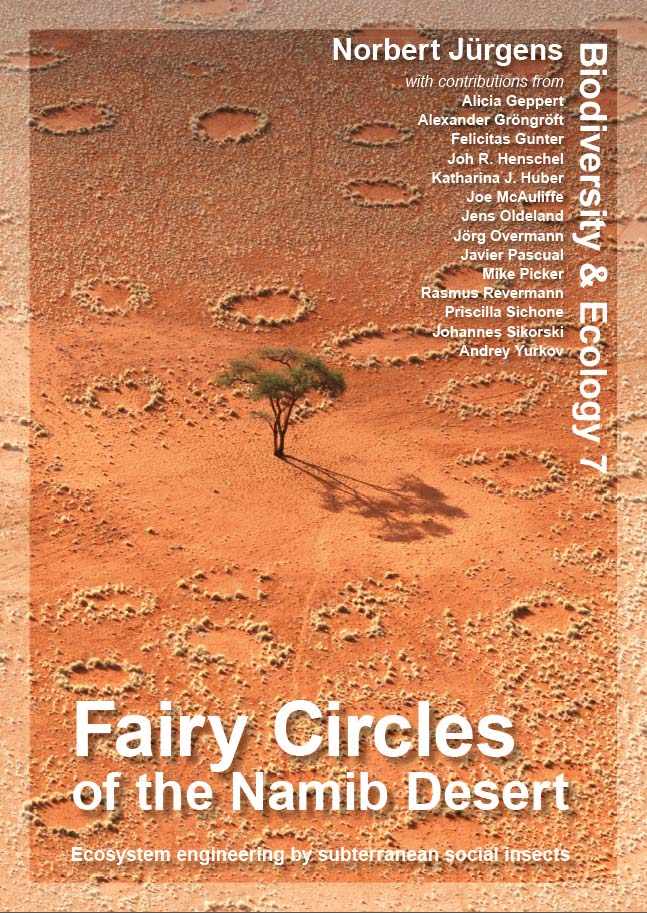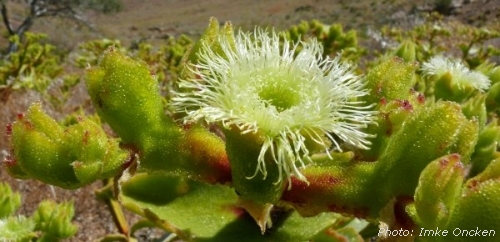
|

Department of Biology Institute of Plant Science and Microbiology |
|
|
|
Department of Biology
Institute for Plant Science and Microbiology Telephone, E-Mail Botanical Garden Prof. Dr. Norbert Jürgens Prof. Dr. Jens Günter Rohwer Classical and Molecular Systematics Vegetation ecology and biodiversity Data Facility Herbarium Hamburgense BEE-Press
|
Commentary/ PressemitteilungA short commentary on Getzin et al. (2016): Discovery of fairy circles in Australia supports self-organization theory, PNAS. Norbert Juergens University of Hamburg, Biocenter Klein Flottbek, Study group Biodiversity, Evolution & Ecology of plants (BEE), Ohnhorststrasse 18, 22609 Hamburg, Germany, mobile Namibia: +264 81-7180740 mobile Germany: +49-170-1666500 12 March 2016 Background: Several journalists asked for a commentary on the PNAS manuscript Getzin et al. “Discovery of fairy circles in Australia supports self-organization theory”. They also asked whether the described structures would also allow an interpretation in the light of the social insect hypothesis. (1) The observation of regularly spaced roundish gaps in the vegetation SE of Newman is a new and interesting discovery. (2) With regard to many features the newly observed clay rich circles are in striking contrast to the Namib Fairy Circles. Sometimes terminology is important. It would cause confusion if they would be called“fairy circes” without reference to the peculiarities, something like e.g. “clay circles” would be more helpful . (3) While the Namib Fairy Circles enjoy high infiltration and storage of rain water in the sandy soil of the bare patch, the Australian circles are characterized by the opposite: an almost water rejecting clay rich topsoil that does not allow infiltration of rain water. (4) Following the information provided by the authors the reason for the lack of plants is very simple: The clay rich soil allows almost no water infiltration or storage and therefore it does not allow establishment of vegetation. In contrast, Namib Fairy Circles are the wettest places in those landscapes and would be filled with plants if not sand termites would kill and remove them. (5) As the vegetation free patches near Newman are clearly controlled by the significantly increased clay content of the bare patches the main question must be which organism or which process has increased the clay content. The authors themselves show that the highest clay content is found in termite nest structures that are found mainly at the edge of the bare patches. Several termite species are known to transport soil material from great depth. (6) Unfortunately the authors did not excavate the nest and tunnel system of these termites but did only a surface inspection of those nest elements that were visible at the surface. (7) In spite of their own SEM-EDS analysis of the clay rich termite nest material the authors prefer to explain the extreme increase in clay content as the effect of raindrops that cause “a classified deposition of fine particles at the surface”. Unfortunately the authors do not provide a proper soil profile analysis that could perhaps clarify whether a surface effect of raindrops can really explain an increase of clay from 6.53 % in the matrix soil to 18.13 % in the soil of the gap center. Even more alarming is the increase in fine silt from 13.86 in the matrix to 38.88 % in the soil of the gap center. This is a clear hint to a solid material transport, as can be performed by social insects like termites. Unfortunately, the biology of the involved termites is not studied or explained, in the manuscript. (8) A team of researchers from the University of Cape Town and the University of Hamburg has recently shown in Ecological Entomology* that the observed regular spatial patterns are also generated by many social insects that compete for space and resources around their colonies and nests. Also in the case of the Australian bare patches found on clay rich soil islands near Newman the role of the termite colonies should be analyzed in depth. The clay islands could perhaps be the result of repeated nest formation over time. (9) The explanation of the observed patterns by self-organization remains questionable. If the model of self-organization were correct, it should be generic and circular bare patches should occur globally. However, we do not find structures like the Namib Fairy Circles on sandy soils near the 100 mm mean annual precipitation isohyet all over the world or even in the Australian drylands. The discovery of the bare patches on edaphically distinct clay islands on a very restricted area in the much wetter alluvial landscape near Newman with 327 mm mean annual precipitation does not challenge this argument. * = Jürgens, N., Vlieghe, K. E. P., Bohn, C., Erni, B., Gunter, F., Oldeland, J., Rudolph, B. and Picker, M. D. (2015): Weaknesses in the plant competition hypothesis for fairy circle formation and evidence supporting the sand termite hypothesis: Response to recent plant competition hypothesis. Ecological Entomology 40: 661-668.) | |||||||
| Imprint / last update: 2016-03-14 by: Norbert Jürgens |
|

